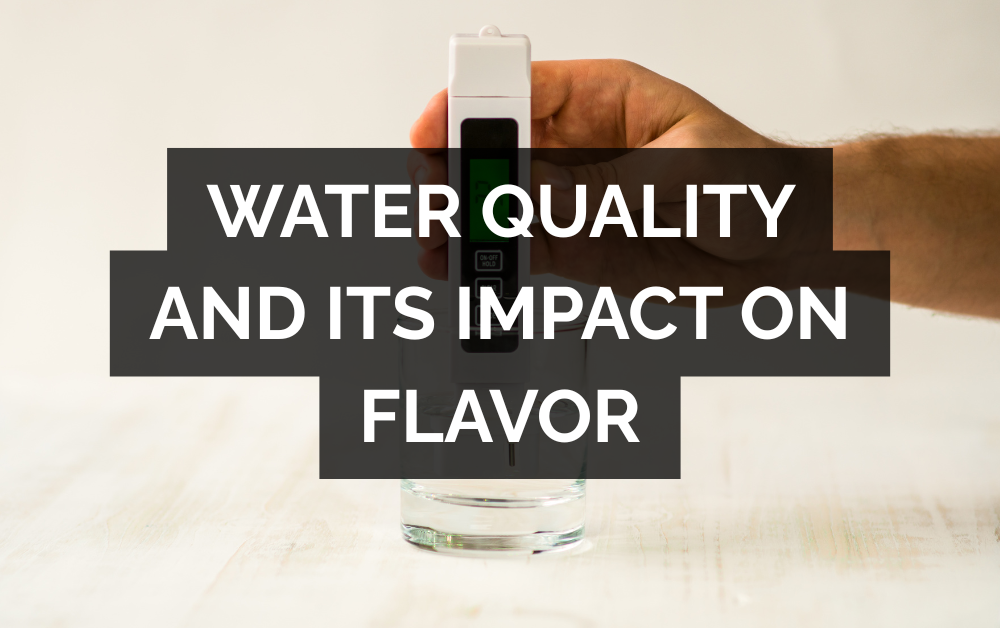If you're using tap water, your brews might be suffering from too much chlorine, high alkalinity, or mineral imbalance. Even bottled water can vary wildly. This DIY recipe helps you create balanced water tailored specifically for brewing great coffee—no guesswork, just clean, sweet, flavorful cups.
Target Water Profile (Based on SCA Guidelines)
| Parameter | Target Range |
|---|---|
| TDS | ~120 ppm |
| Hardness | ~60–70 ppm |
| Alkalinity | ~40 ppm |
| pH | ~7.0 |
| Chlorine | 0 ppm |
Ingredients
These are food-safe, common, and inexpensive. You’ll be using small, precise amounts, so accuracy matters.
| Ingredient | Purpose | Where to Get |
|---|---|---|
| Distilled or RO Water | Blank slate base | Grocery store |
| Magnesium Sulfate (Epsom Salt) | Adds magnesium for better extraction and fruitiness | Pharmacy or online |
| Baking Soda (Sodium Bicarbonate) | Adds alkalinity (buffer) | Grocery store |
| Optional: Calcium Chloride | Adds calcium for body and balance | Online (lab-grade or brewing suppliers) |
Tools Needed
-
Digital scale (to 0.01g accuracy)
-
Small mixing container (e.g., 100 ml bottle or jar)
-
1-gallon (3.78 L) jug of distilled or RO water
-
Pipette or syringe for dosing (or a small, precise measuring spoon)
Step-by-Step Recipe
Step 1: Make Your “Mineral Concentrate”
In a small bottle (100 ml), mix:
-
1.48g Magnesium Sulfate (Epsom Salt)
-
0.85g Baking Soda
Fill the bottle with distilled water up to 100 ml. Shake until fully dissolved. This is your concentrate.
Step 2: Dose the Concentrate Into Brewing Water
To a 1-gallon (3.78 L) jug of distilled or RO water, add:
-
2 ml of the concentrate
Shake well.
What You’ve Made
This mix gives you water with approximately:
-
65 ppm hardness (mostly magnesium)
-
40 ppm alkalinity
-
TDS around 110–120 ppm
-
Neutral pH (~7.0)
Perfect for brewing washed Ethiopians, fruity naturals, dense anaerobics—anything you want to taste clearly and consistently.
Pro Tips
Why magnesium instead of calcium? Magnesium enhances fruity and bright notes, while calcium tends to emphasize roundness and body. For pour-over and filter brews, magnesium typically brings out more clarity.
Want more body or sweetness? Try a 50/50 blend of magnesium sulfate and calcium chloride in your concentrate.
Batch for espresso separately. Espresso benefits from higher TDS and more calcium. This recipe leans toward clarity and nuance, not body and crema.
Important Notes
-
Always use distilled or reverse osmosis water as your base. Tap water contains unpredictable mineral content that can throw off your ratios.
-
Only use food-grade or lab-grade minerals. Avoid supplements or fertilizers.
-
Label your concentrate clearly and store it sealed in a cool place.
Final Thought
Think of this like seasoning your brew water. Just as salt enhances food, the right mineral balance unlocks the full flavor potential of your coffee. Once you try this method, it’s hard to go back.



